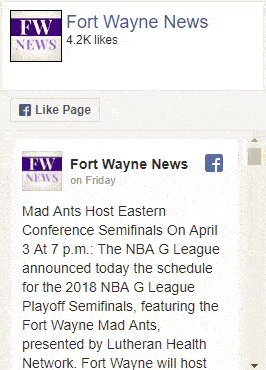Fort Wayne earned 1 “park bench” on The Trust for Public Land’sParkScore® index, ranking 98th among the 100 largest U.S. cities. 98th was the lowest ranking for 2016, because two cities (Gilbert, AZ and Laredo, TX) did not provide parks detail to The Trust for Public Land. Fort Wayne debuted on the ParkScore index this year, as the ranking system expanded to 100 cities, up from 75 last year.
“Every American deserves to live within a 10-minute walk of a park, and ParkScore helps us measure which cities are meeting that mark,” said Will Rogers, President of the Trust for Public Land.
ParkScores are based on three factors: Park Access, which measures the percentage of residents living within a 10-minute walk of a park (approximately ½-mile); Park Size, which is based on a city’s median park size and the percentage of total city area dedicated to parks; and Facilities and Investment, which combines park spending per resident with the availability of four popular park amenities: basketball hoops, off-leash dog parks, playgrounds, and recreation & senior centers.
Fort Wayne received below average marks on all ParkScore rating factors. According to The Trust for Public Land, only 42% of Fort Wayne residents live within a 10-minute walk of a park, far below the national ParkScore average of 67.7%. Fort Wayne’s median park size is only 3.9 acres, also below the national ParkScore median of 5.1 acres. And, parks make up only 3.5% of Fort Wayne city area, compared to a national ParkScore average of 8.9%.
Atop the ParkScore rankings Minneapolis narrowly edged out Saint Paul for first after the cross-town rivals shared the top spot in 2015. Fresno, California, also marked an important achievement for 2016, climbing out of last position for the first time in ParkScore history. The Central California city was buoyed by the opening of several new playgrounds and a dog park.
Nationally, The Trust for Public Land reported a trend toward increased investment in local park systems. Returning ParkScore cities increased spending on parks by an average of $1 per person in 2016, according to the organization.
“Cities are investing in park systems and that’s showing up on the ParkScore index. It is great news for public health, the environment, and local economies,” said Adrian Benepe, Senior Vice President and Director of City Park Development for The Trust for Public Land. “Parks provide places for children and adults to get exercise, and they serve as community meeting places where friendships are built and a sense of community is strengthened,” he added.
